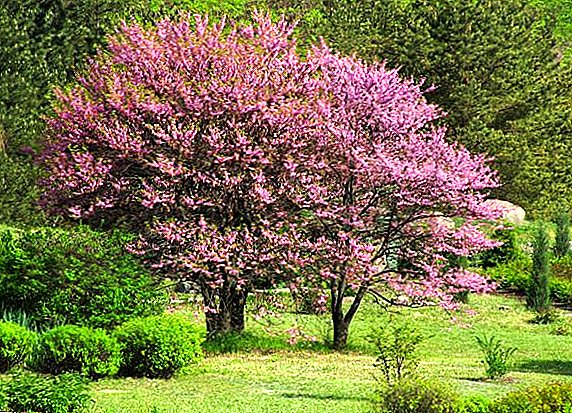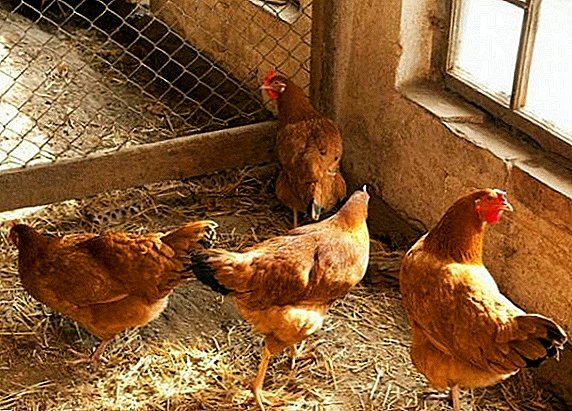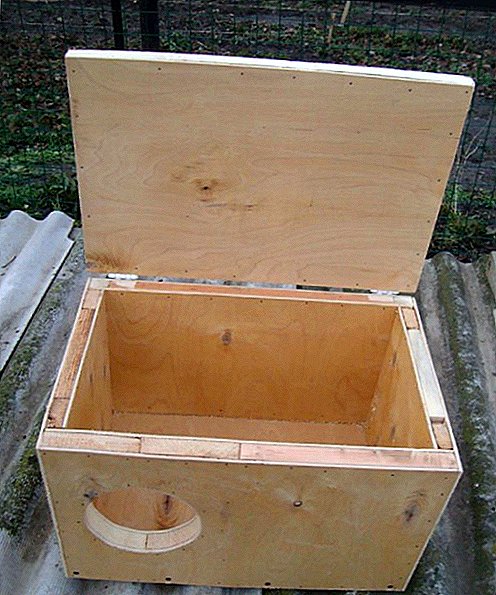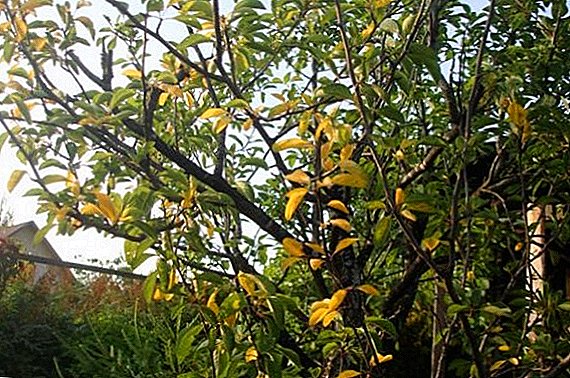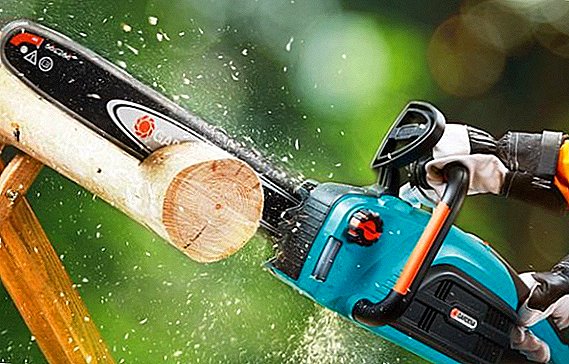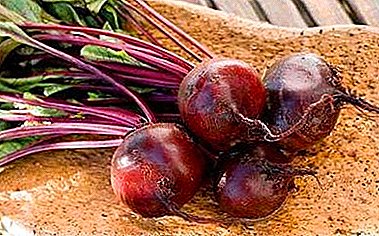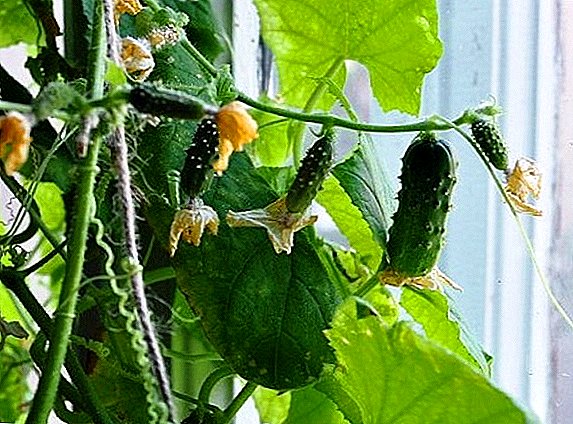 Among summer residents and just lovers it became fashionable to grow cucumbers and other vegetables at home. Thus, your plants will always be under the watchful eye and enjoy a bountiful harvest. However, even home grown crops are prone to disease. It is important to know in detail about the diseases of cucumbers when grown on the windowsill and the problems that arise, and the photo will let you know the enemy in person.
Among summer residents and just lovers it became fashionable to grow cucumbers and other vegetables at home. Thus, your plants will always be under the watchful eye and enjoy a bountiful harvest. However, even home grown crops are prone to disease. It is important to know in detail about the diseases of cucumbers when grown on the windowsill and the problems that arise, and the photo will let you know the enemy in person.
The main causes of diseases of home cucumbers
Although all diseases arise and develop for various reasons, they have the same source. Due to the fact that your cultures develop and are for a long time in the same soil, it gradually loses its properties, even despite the abundant feeding. Also in such conditions creates its own microclimate. These factors, together with the particular causes of certain diseases, help the latter to actively arise on your plants.
You can taste delicious home-made cucumbers even if the property has neither a country plot, nor a dacha. In such a situation, the only salvation will be cucumber varieties for the balcony. Get acquainted with the technique of growing cucumbers at home.

Diseases of seedlings and their treatment
The first difficulties arise even when growing seedlings - almost everyone faces this. In this section there is a description of the disease of cucumber seedlings on the windowsill and their treatment with a photo of the diseases themselves. The most commonplace problems are the yellowing and stretching of the seedlings. The latter arises due to excess heat or insufficient light. Seedlings should be kept in a cool place, at a temperature not higher than 22 ° C.
Important! Heat is needed only during the period of spitting and seedling.In the case of such a problem, just provide the necessary conditions, your plant will immediately "revive" and go on the mend.
Yellowness seedlings occurs for several reasons. When grown in cups, the roots become cramped, they lack nutrition. In this case, simply transplant seedlings.
If there is enough space, the problem may still be a lack of nitrogen if fertilizers such as Azogran or Vermistim are applied.  Another reason may be too long content in cups or other vases. Cucumbers need to be transplanted to a permanent place in time, otherwise you can harm them.
Another reason may be too long content in cups or other vases. Cucumbers need to be transplanted to a permanent place in time, otherwise you can harm them.
If your plant has yellow seed leaves, this indicates a lack of lighting. Just change the location and everything will be fine.
In addition to such simple diseases, there are more terrible enemies. Among the most frequent are root rot, powdery mildew, fusarium wilt, pernoporosis and so on. One of the insidious diseases of cucumber is the black leg.
Blackleg
By the way, the black leg attacks not only cucumbers, but also many other garden plants. The attack itself has a fungal origin.  If during the period of the appearance of cotyledon leaves you notice that the roots of your seedlings begin to turn yellow, then the disease has already struck them. Further, the root neck acquires a brown color and a certain waist appears on it. Meanwhile, the lower part of the stalk becomes wet and becomes dark green. Then the roots darken, rot, and the lower leaves turn yellow and fade.
If during the period of the appearance of cotyledon leaves you notice that the roots of your seedlings begin to turn yellow, then the disease has already struck them. Further, the root neck acquires a brown color and a certain waist appears on it. Meanwhile, the lower part of the stalk becomes wet and becomes dark green. Then the roots darken, rot, and the lower leaves turn yellow and fade.
Infection with black leg occurs as follows. Pathogens (fungi) penetrate the plant through root hairs or small cracks in the bark. They are able to exist in the soil, eating only plant residues, so that you will not notice their accumulation in the soil. Sudden sources of illness can also be seed, manure and peat.
Did you know? The homeland of cucumbers is the foot of the Himalayan mountains. Even now they can be found there in the native wild form.The catalysts of the disease can be: watering with cold water; a sharp decrease in air or ground temperature. Focus on the designation of 12 ° C - this is a critical invalid point.
In the fight against this disease, the main thing is to ensure the purity of the soil. For prophylaxis, it is possible to prepare the soil with the preparation "Colloidal sulfur" in advance before planting. Count on 40 g about 10 liters of water.
You can also take Bordeaux mixture: 100 g per 10 liters of water. You can use instead of the drug. All this time, the temperature surrounding the cucumbers should not be below 20 ° C, and the water all 22 ° C. In addition to fungi, garden crops often infect viral diseases. One of these is a mosaic.
Mosaic
 Recognizing the mosaic is very easy. If it hits your seedlings, the foliage will begin to be covered with yellow spots and curl. This virus affects not only seedlings, but already adult plants. With further development of the disease, the stem cracks. The disease is very exhausting seedlings, when planting a good result can not wait. The best solution would be to remove the seedlings and replace them with others. Infection occurs through aphids or through infected plants and weeds.
Recognizing the mosaic is very easy. If it hits your seedlings, the foliage will begin to be covered with yellow spots and curl. This virus affects not only seedlings, but already adult plants. With further development of the disease, the stem cracks. The disease is very exhausting seedlings, when planting a good result can not wait. The best solution would be to remove the seedlings and replace them with others. Infection occurs through aphids or through infected plants and weeds.
Important! The virus can survive on roots throughout the winter.Mosaic along with cucumbers affects peppers, tomatoes, cabbage and a number of other crops. Diseases attack not only seedlings, but also adult bushes. But there are already their famous "pests".
Diseases of adult bushes
A frequent cause of diseases of adult bushes of various cultures is a violation of planting and caring for seedlings. Even if your seedlings are healthy, the consequences of the wrong conditions can manifest themselves in the future in the form of diseases.
If your bushes are in excessively humid conditions, they lack fresh air, they are subject to temperature fluctuations or are too thickly planted. - all this may entail a number of root and root diseases. As well as seedlings, adult plants can attack various viruses and fungi, one of which is powdery mildew.
Mealy dew
 Mealy dew is considered the most common disease not only of garden crops, but also of many others. Manifested disease in the form of white spots on the foliage. The latter are formed due to mycelium of the fungus. The main conditions for the appearance of the fungus are high humidity and low temperature, about 15 ° C. It is enough to hold your plants in such conditions for several days and the disease is provided for them. Gardeners notice that even with good care, in case of prolonged cold rains, cucumbers begin to fall ill.
Mealy dew is considered the most common disease not only of garden crops, but also of many others. Manifested disease in the form of white spots on the foliage. The latter are formed due to mycelium of the fungus. The main conditions for the appearance of the fungus are high humidity and low temperature, about 15 ° C. It is enough to hold your plants in such conditions for several days and the disease is provided for them. Gardeners notice that even with good care, in case of prolonged cold rains, cucumbers begin to fall ill.
With the onset of warm sunny weather, fungi begin intensive sporulation, the disease completely covers your cucumbers. Rescue your bushes is very difficult, therefore, we recommend to carry out preventive measures. Not only the fungus infects cucumbers, but also various bacteria.
Gray rot
Gray rot easily recognizable by brown watery spots with a touch of gray. This bacterial disease affects all parts of a plant at once. The main reason for the occurrence is again excessive humidity and low temperatures for cucumber. Under these conditions, they are most at risk of getting sick.  To prevent gray mold, carefully watch your plants. Crops should be at a sufficient distance from each other, and on the beds there should be no plant residues - it is on them that the source of the disease lies. If your plants are already affected, treat them with a fungicide. Among them are "Bayleton" and pasta "Rovral". The affected areas must be removed immediately. But the next disease manifests itself in a completely different way and is aimed primarily at the roots.
To prevent gray mold, carefully watch your plants. Crops should be at a sufficient distance from each other, and on the beds there should be no plant residues - it is on them that the source of the disease lies. If your plants are already affected, treat them with a fungicide. Among them are "Bayleton" and pasta "Rovral". The affected areas must be removed immediately. But the next disease manifests itself in a completely different way and is aimed primarily at the roots.
For the protection and treatment of cucumber diseases, such fungicides are used: "Hom", "Acrobat MC", "Switch", "Strobe", "Ordan".
Root rot
Root rot can have both bacterial and fungal character. The onset of the disease may be due to the seeds that are known to be sick or the soil that is infested with pathogens.  The catalyst of the virus becomes dry and hot soil or saline soil. It is possible to learn infection on withering of foliage during the hot period. The root darkens, becomes brown and rotten. Since he can no longer provide the bush with everything he needs, the plant slowly fades. When the root system dies completely, the cucumber dies after it. Spots on the leaves may indicate another rot.
The catalyst of the virus becomes dry and hot soil or saline soil. It is possible to learn infection on withering of foliage during the hot period. The root darkens, becomes brown and rotten. Since he can no longer provide the bush with everything he needs, the plant slowly fades. When the root system dies completely, the cucumber dies after it. Spots on the leaves may indicate another rot.
Slerinia (white rot)
White rot appears as white patches that darken gradually. The rest of the cucumbers are covered with white bloom, becoming wet and slimy. Next is the process of decay.
The cause is sclerotia. They hibernate in the soil and multiply rapidly in conditions of excessive moisture. To reanimate the plants, remove the diseased areas and process the remaining sections with charcoal or lime. If sclerotinia struck the bushes deeply, then simply remove them completely. The next disease is very insidious. It develops inside the plant and only after it manifests itself. 
Perinosporosis
Perogosporoz is fungal in nature and can develop from the moment of sowing, and manifest itself only with the appearance of fruits. Disease occurs due to infected seeds or plant residues affected by fungal mycelium.
You can find out the disease by Shrovetide on the foliage. Over time, the reverse side of the leaves will be covered with gray bloom. When the spots grow and darken, it dries. The fungus is able to destroy your bushes in a very short time. 
Medyanka or anthranosis
Medyanka or anthranosis is known for not only the plants, but also the fruits themselves are ill. You can see it on the brown spots on the leaves. Over time, they become more and turn black. Then the plot dries out and crumbles, as if it was burned with something. The spots on the affected fruit can go down to 5 mm.
Did you know? Napoleon himself promised to reward someone who finds a way to store fresh cucumbers during their hikes.The source of the disease are the seeds of diseased plants, topsoil and affected plant debris. It is much more pleasant not to cure diseases, but to prevent them. For this you need to regularly engage in prevention.

What to do for prevention?
For the prevention of root rot, you can simply use pure or deliberately pickled seeds. The soil in which you will plant, must be prepared and not contaminated.
From the drugs you can use "Fitosporin-M". It is suitable for treatment and prevention. For the prevention of peronosporaz pay attention to the seeds. They need to be pickled or heated. It is also possible to use varieties that are known to be resistant to it.
In cases of infection, spray means "Kuprostat" or "MC". If you adhere to all temperature standards, regularly loosen the soil, your cucumbers will be more resistant to diseases. In preventing fungal diseases, it is helpful to spray the infusion of marigolds.
Important! From bacteria your cucumbers will save preventive measures. Treat the soil and seeds before planting. They can be treated with a solution of potassium permanganate.Carefully ensure that there are no weeds, avoid pests that can become carriers of diseases. Remember, prevention is better than cure.


